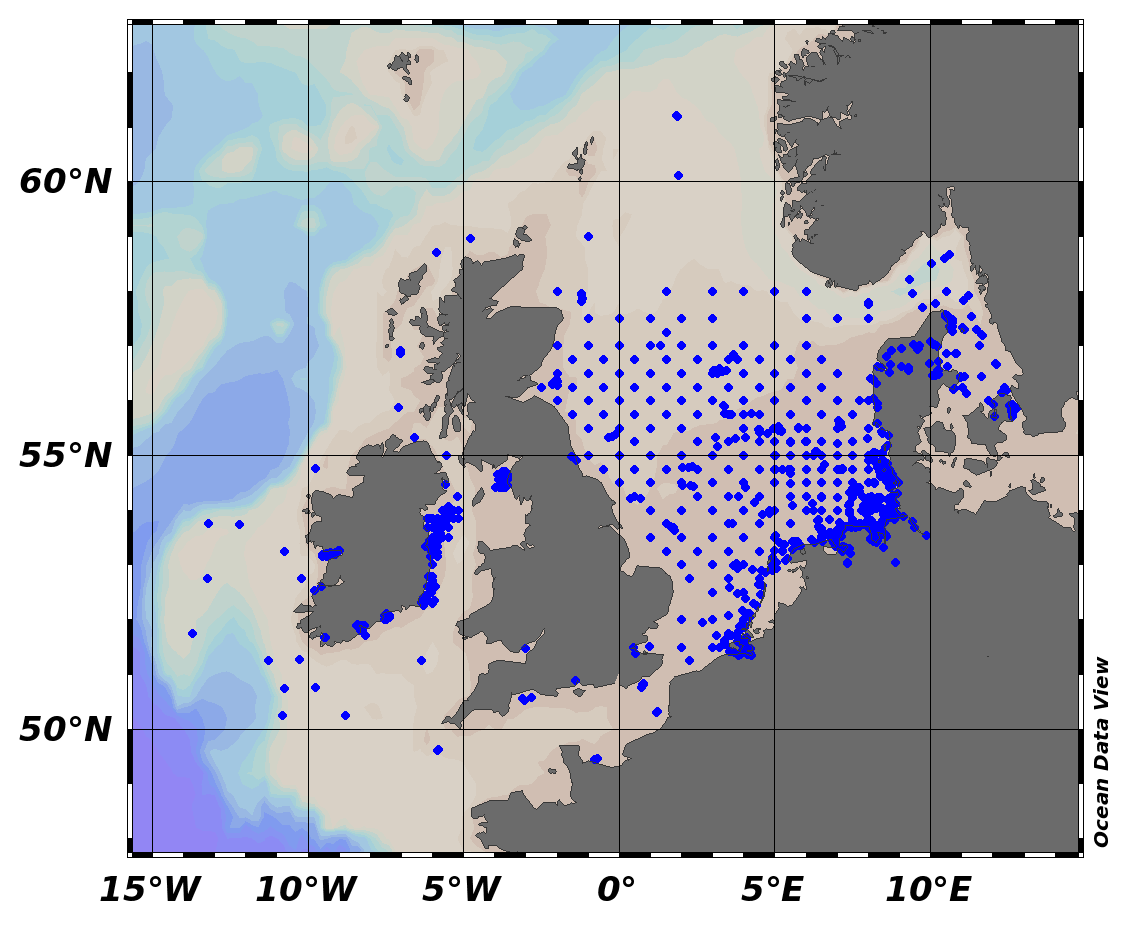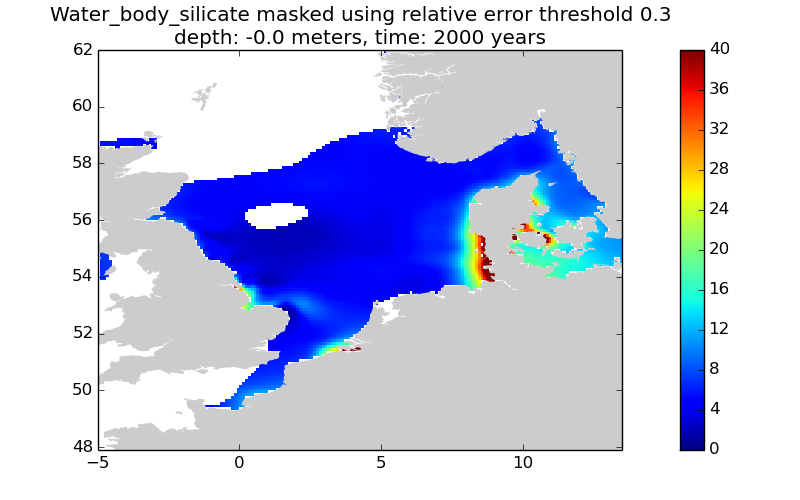Plymouth Marine Laboratory
Type of resources
Available actions
Topics
Keywords
Contact for the resource
Provided by
Years
Formats
Representation types
Scale 1:
Resolution
-

EMODnet Chemistry aims to provide access to marine chemistry data sets and derived data products concerning eutrophication, ocean acidification and contaminants. The chemicals chosen reflect importance to the Marine Strategy Framework Directive (MSFD). This regional aggregated dataset contains all unrestricted EMODnet Chemistry data on contaminants (59 parameters), and covers the North Sea with 34978 CDI records divided per matrices: 3909 biota time series, 28071 water profiles, 2998 sediment profiles. Vertical profiles temporal range is from 1970-02-17 to 2017-10-26. Time series temporal range is from 1979-02-26 to 2017-02-28. Data were aggregated and quality controlled by ‘Aarhus University, Department of Bioscience, Marine Ecology Roskilde from Denmark. Regional datasets concerning contaminants are automatically harvested. Parameter names in these datasets are based on P01, BODC Parameter Usage Vocabulary, which is available at: http://seadatanet.maris2.nl/bandit/browse_step.php . Each measurement value has a quality flag indicator. The resulting data collections for each Sea Basin are harmonised, and the collections are quality controlled by EMODnet Chemistry Regional Leaders using ODV Software and following a common methodology for all Sea Regions. Harmonisation means that: (1) unit conversion is carried out to express contaminant concentrations with a limited set of measurement units (according to EU directives 2013/39/UE; Comm. Dec. EU 2017/848) and (2) merging of variables described by different “local names” ,but corresponding exactly to the same concepts in BODC P01 vocabulary. The harmonised dataset can be downloaded as ODV spreadsheet (TXT file), which is composed of metadata header followed by tab separated values. This worksheet can be imported to ODV Software for visualisation (More information can be found at: https://www.seadatanet.org/Software/ODV ). The same dataset is offered also as XLSX file in a long/vertical format, in which each P01 measurement is a record line. Additionally, there are a series of columns that split P01 terms in subcomponents (measure, substance, CAS number, matrix...).This transposed format is more adapted to worksheet applications users (e.g. LibreOffice Calc). The 59 parameter names in this metadata record are based on P02, SeaDataNet Parameter Discovery Vocabulary, which is available at: http://seadatanet.maris2.nl/v_bodc_vocab_v2/vocab_relations.asp?lib=P02 . Detailed documentation will be published soon. The original datasets can be searched and downloaded from EMODnet Chemistry Download Service: https://emodnet-chemistry.maris.nl/search
-

This gridded product visualizes 1960 - 2014 water body silicate concentration (umol/l) in the North Sea domain, for each season (winter: December – February; spring: March – May; summer: June – August; autumn: September – November). It is produced as a Diva 4D analysis, version 4.6.9: a reference field of all seasonal data between 1960-2014 was used; results were logit transformed to avoid negative/underestimated values in the interpolated results; error threshold masks L1 (0.3) and L2 (0.5) are included as well as the unmasked field. Every step of the time dimension corresponds to a 10-year moving average for each season. The depth dimension allows visualizing the gridded field at various depths.
-
Experimental data - sediment from Fal estuary (field-contaminated with heavy metals) seeded with meiofauna from Lynher estuary in microcosms
-
This dataset arises from probably the first study on the effects of TBT on meiobenthic communities. Microcosm experiments were conducted where meiobenthos is concentrated in TBT contaminated and uncontaminated sediments.
-
The intended use of this dataset of the Plymouth Sound was the description of small-scale spatial patterns in soft sediment fauna. 44 stations were sampled for macrofauna around the British Isles during the period of July and August 1995
-
This dataset is the result of a laboratory experiment to determine the response of benthic nematode communities to different pollutants in various doses and in two sediment types. The Lynher estuary is characterised by muddy sediments, whereas the Exe estuary is sandy.
-
Nematodes were collected using four different collection methods at two sites with contrasting sediment types. The aim was to assess differences between samplers by looking at the variation in nematode community structure.
-
This dataset is the result of a laboratory experiment to determine the response of benthic nematode communities to different pollutants in various doses and in two sediment types. The Lynher estuary is characterised by muddy sediments, whereas the Exe estuary is sandy.
-
Clyde meiofauna - transect through Garroch Head disposal site (at Station P), Craib cores: Response of the meiofaunal community to sewage sludge disposal in the Firth of Clyde
-
Samples of the macrobenthic fauna of soft sediments were collected from around Svalbard during the 1991 Arctic EPOS cruise of RVPolarstern
 EMODnet Product Catalogue
EMODnet Product Catalogue